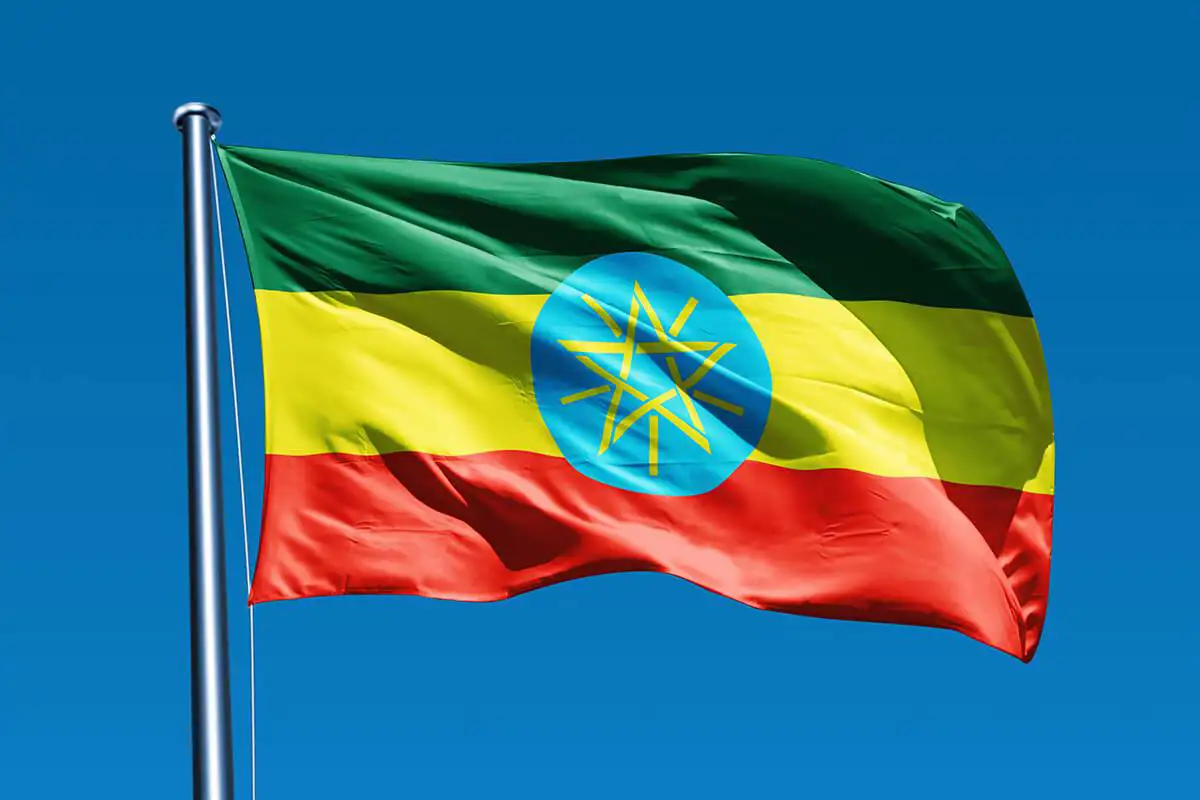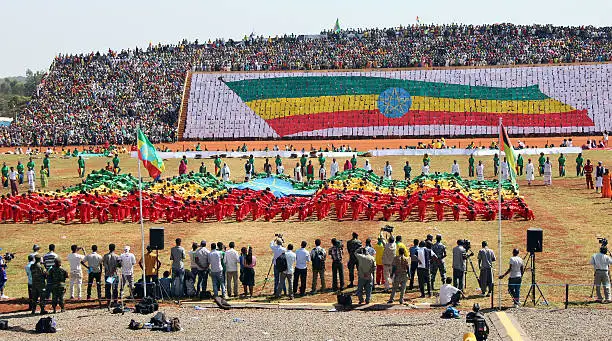By: Fistum Getachew
There are many ways of expressing statehood, sovereignty and territorial integrity as well as identity for a nation. One of them could be the existence of a flag that is legally adopted and used at every official occasion of significance. At the same time, one can say that the national anthem is also another element of identity that usually accompanies the raising ceremony of the flag. In fact, when flags are hoisted the occasion is solemnly marked by the singing of the national anthem especially at international occasions where there is more than one country represented and their flags are flown to honour the states’ presence or attendance, as it were.
Whenever there is the official occasion of hoisting the flag, we have observed that it is usually accompanied by the singing of the national anthem. For instance, we have seen these episodes at international sporting events when the winners are awarded their medals. In those occasions the national flags of the athletes who win the specific contest are hoisted high up accompanied by the loud playing of the relative national anthem.
The raising of the flags in those occasions usually causes a huge emotional condition in the athletes and we have seen in many cases they could not avoid shedding tears. This can only be explained as showing how attached people are to their identity, their nation and its identification with the flag and the national anthem. These are sentiments that grow with us since our school days. We are required to sing the national anthem at the beginning of our school day and that is one way of building up common heritage and a bond with belonging to the same nation and sharing the same destiny. When I was a kid I even remember when at the end of the day we used to lower the flag with another hymn that accompanied the occasion and not only in the morning at the beginning of the activities of the school. I see that this is not done anymore nowadays, but schools still practice this flag raising ceremony with the national anthem sang on the occasion in the presence of all students and staff. This is also practiced in many government establishments before the beginning of their working day.
Clearly, it is understood that the flag is the maximum expression of identity and belonging and a testimony of dignity and pride for the persons who honour the flag. Every sovereign nation has its flag which is an identification that cannot be confused with others. Usually flags have their historical origin and context when it is chosen to be the symbol of that specific country. For instance we were taught in school that the Ethiopian flag is composed of three colors which are spread horizontally beginning with the green color in the first layer intended to depict the fertility of the land followed by the yellow colour intended to depict the future and the bright hope of the country. The last layer at the bottom of the flag is the red colour which is the symbol of the commitment of citizens to defend the country no matter what sacrifice is to be paid including life. This is intended to show readiness even to shed one’s blood for the freedom and dignity of the motherland.
The Ethiopian flag has always been identified with freedom and independence as Ethiopia has never been colonized by foreign forces and this particular history of the country has inspired many African countries when they liberated themselves from colonialism such as Ghana. Mali etc and they have adopted the three colors of the Ethiopian flag with some variations. This was the original flag beginning from the imperial times but then there were some symbols added on the flag without changing the basic colours and are meant to depict the kind of regime in power.
This was done during the military regime and then changed during the advent of the EPRDF government which on the occasion of the proclamation of the new Federal Democratic Republic of Ethiopia, FDRE, the symbol of the blue star was added to the basic colours to depict ‘the equality of all the nations, nationalities and peoples of the country’ abolishing the unitary state and arranging it with federal states.
Ethiopians are very much attached to their flag. They consider it as a definition of their identity, their history, tradition and heritage. They consider their flag as the expression of the freedom of their country and would be ready to pay any sacrifice to defend it and honour it especially when there are aggressions from beyond the borders of the territory of the country. They say the flag is their pride, dignity and freedom and do not tolerate any sort of abuse to it by anyone.
The Ethiopian flag is well known in many parts of the world thanks to the various victories of our athletes who shine in international contests such as the Olympics, the World Athletics events. Here the flags of those who win gold medals are hoisted high up loftier than the flags of those who win silver and bronze medals and the national anthem of the winning country is sung for everyone to hear. Those are historic moments for any athlete and for those in attendance. That is when we observe the emotional expressions of athletes reaching the zenith of achievements. These athletes have been asked what they felt when they saw their flag raised at these occasions. Their response is that they are driven by overwhelming emotions so much that they hardly have control on their eyes that shed tears of joy and delight. It shows their deep attachment to their land and its maximum expression which is the flag.
Everyone in Ethiopia remembers the occasions during which the renowned athlete Haile Gebre Selassie and the shining African legend Derartu Tulu when they were awarded their gold medals at the Olympics in Sydney 2000. Those are unforgettable days. When they were asked what they felt when their country’s flag was hoisted in the Olympic stadium, they were incapable of controlling their emotions and burst into tears. Honouring the flag is hence one way of expressing one’s love for the motherland. In fact the marking of the National Flag Day has its origin from these sentiments as it is a bond between nationals of the same country.
This year the marking of the National Flag Day has reached its 18th year and as usual it has been carried out at the premises of the House of People’s Representatives. This year the theme of the commemoration is “Our flag is the herald for a great era of prosperity, national unity, sovereignty, and the Ethiopian Renaissance.”
At the celebration in front of many high ranking government officials including the speakers of the two Houses and the President of the Federal Supreme Court President Taye Atske Selassie talked about the significance of the day and the attachment of Ethiopians to their flag. He said the Ethiopian flag stands as a symbol of sovereignty and unity. The president added that the fact that Ethiopia has inaugurated the GERD this year makes the celebration of the Flag Day very special and magnifies Ethiopia’s status in the world. It is also a testimony to Ethiopia’s development and prosperity, according to the president. He then mentioned the country’s recent achievements such as the Green Legacy, the agricultural productivity, the Corridor Development Projects in our cities that have given the country a new, clean and modern look worthy of the special attention of the various tourists who happened to come to Ethiopia. The construction of the fertilizer factory and that of natural gas also add to the country’s growth according to Taye in his speech at the commemoration of the National Flag Day.
All these developments add to the dignity and global stature of Ethiopia and its flag which is its international identity card. The president also took the opportunity to reaffirm Ethiopia’s position with regard to issues such as its need to have access to sea as an important factor to continue with the current trajectory of sustained and relentless growth and development. He said Ethiopia will continue to uphold its right to fair access and use of the sea based on mutual benefit and cooperation in the region through peaceful, diplomatic and give and take principle.




